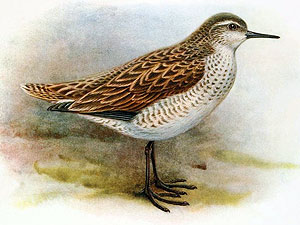West Indian Snipe (Gallinago kakuki)
The West Indian Snipe was described in 2016, its fossil or subfossil remains were recovered from Late Pleistocene to Early Holocene deposits on several islands and island groups including the Bahamas, the Cayman Islands, Cuba, and the Turks and Caicos Islands.
The West Indian Snipe was a volant species but probably had quite short wings, this can be assumed from the shape of its wing bones. [1][2]
***
The species probably died out for more or less natural reasons, following changing environmental conditions due to changes in the height of the sea level after the beginning of the Holocene. The last remaining populations were then probably extirpated by the first Amerindian settlers.
********************
References:
[1] William Suárez: The enigmatic snipe Capella sp. (Aves: Scolopacidae) in the fossil record of cuba. Caribbean Journal of science 40(1): 155-157. 2004
[2] David W. Steadman; Oona M. Takano: A new extinct species of Snipe (Aves: Scolopacidae: Gallinago) from the West Indies. Zootaxa 4109(3): 345-358. 2016
********************
edited: 01.03.2024

